It’s pretty much impossible to ensure that every corner of your garden gets sunshine all day, but that shouldn’t stop you from planting flowers there. Sure, a lot of flowers need constant sun rays to survive, but that’s not the case for all of them. In fact, many do just fine in permanent shade, and this list covers some of the best examples.
Astilbe
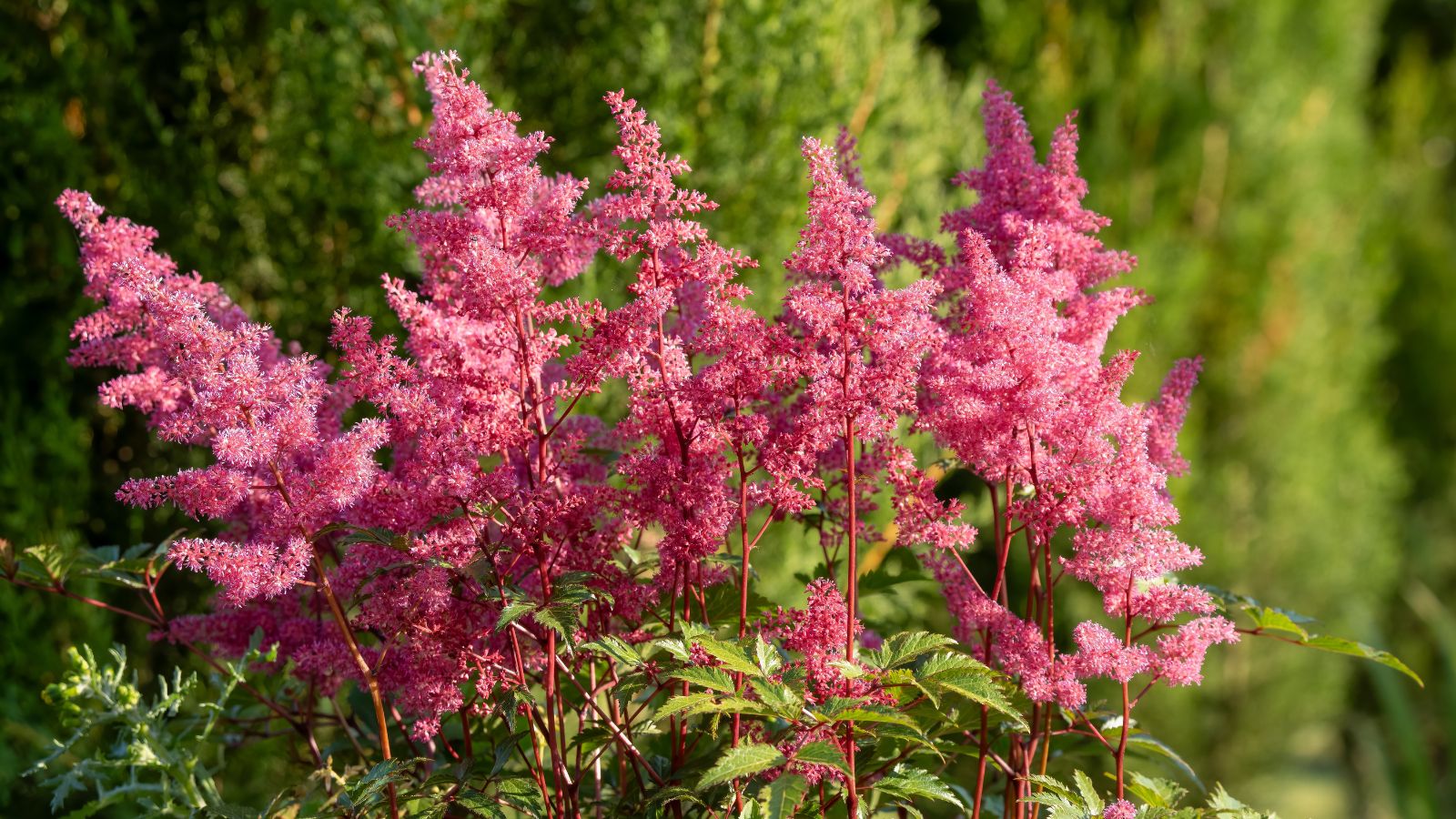
Firstly, you shouldn’t allow the shade to get in the way of planting Astilbes in your garden. These resilient flowers will bloom just fine without direct sunlight, bringing feathery plumes of color to brighten up your garden. The blooms range greatly in color, including soft pastels and bright reds, adding a wide palette of variety to your garden. Best of all, they’re easygoing in other ways, only needing moist soil to keep their colors vibrant.
Hellebore
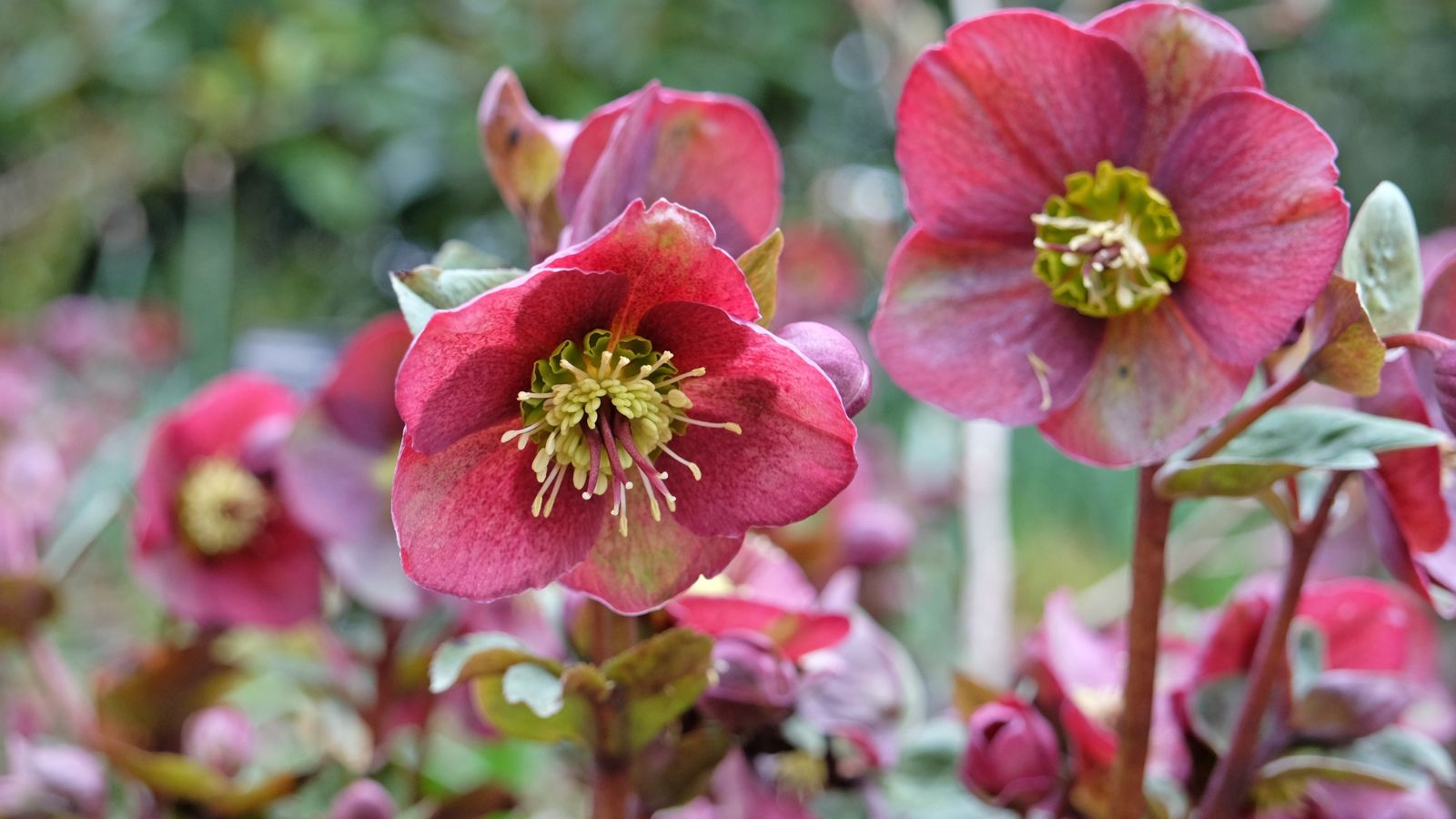
Hellebores, also known as Lenten roses, are one of the earliest bloomers in the garden, with their nodding flowers coming in a range of shades, including deep purples and soft pinks. Despite this, once they’re established, they’re hardy enough to handle cold winters and still put on a beautiful display in the spring, and are ideal for planting in spots that don’t see much sunlight.
Japanese Anemone
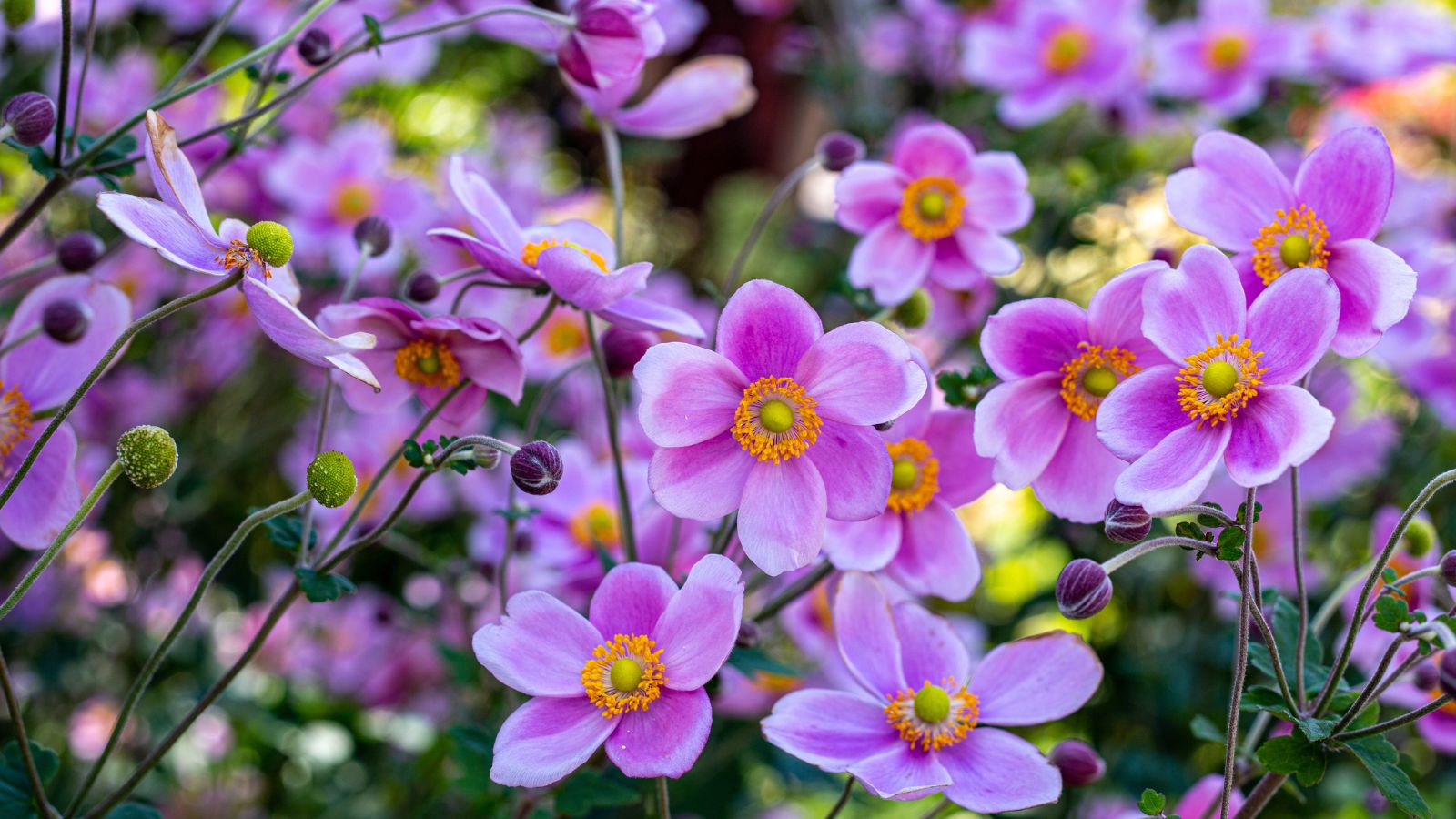
Another flower that will bloom even in the shade is the Japanese anemone, which you can count on to bring a touch of elegance to your yard’s darker areas. Unlike many flowers, they bloom from late summer into fall, offering a long-lasting display of color up until winter. These plants are also tall and sturdy, making them a good choice for the back of a border or near a fence.
Foxglove
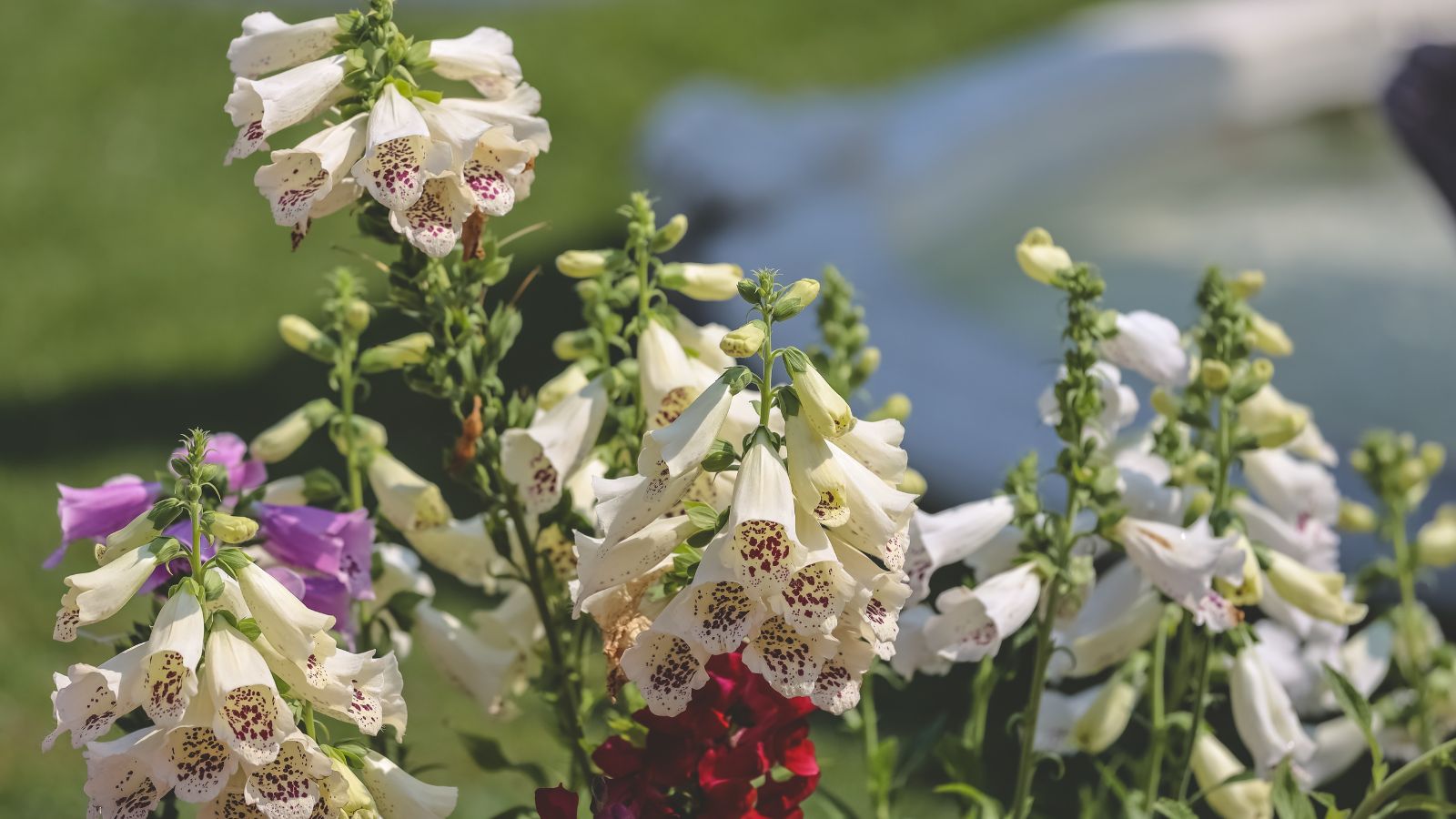
Not many gardeners realize that Foxgloves actually prefer partial shade to full-on sunlight, but you shouldn’t keep them in deep shade either. Take care of this simple requirement, though, along with watering them and giving them good soil, and they’ll soon provide plenty of vertical interest with their tall, bell-shaped blooms. Foxgloves also attract pollinators like bees, and these little pollinators will do wonders for the rest of your flowerbeds.
Bleeding Heart
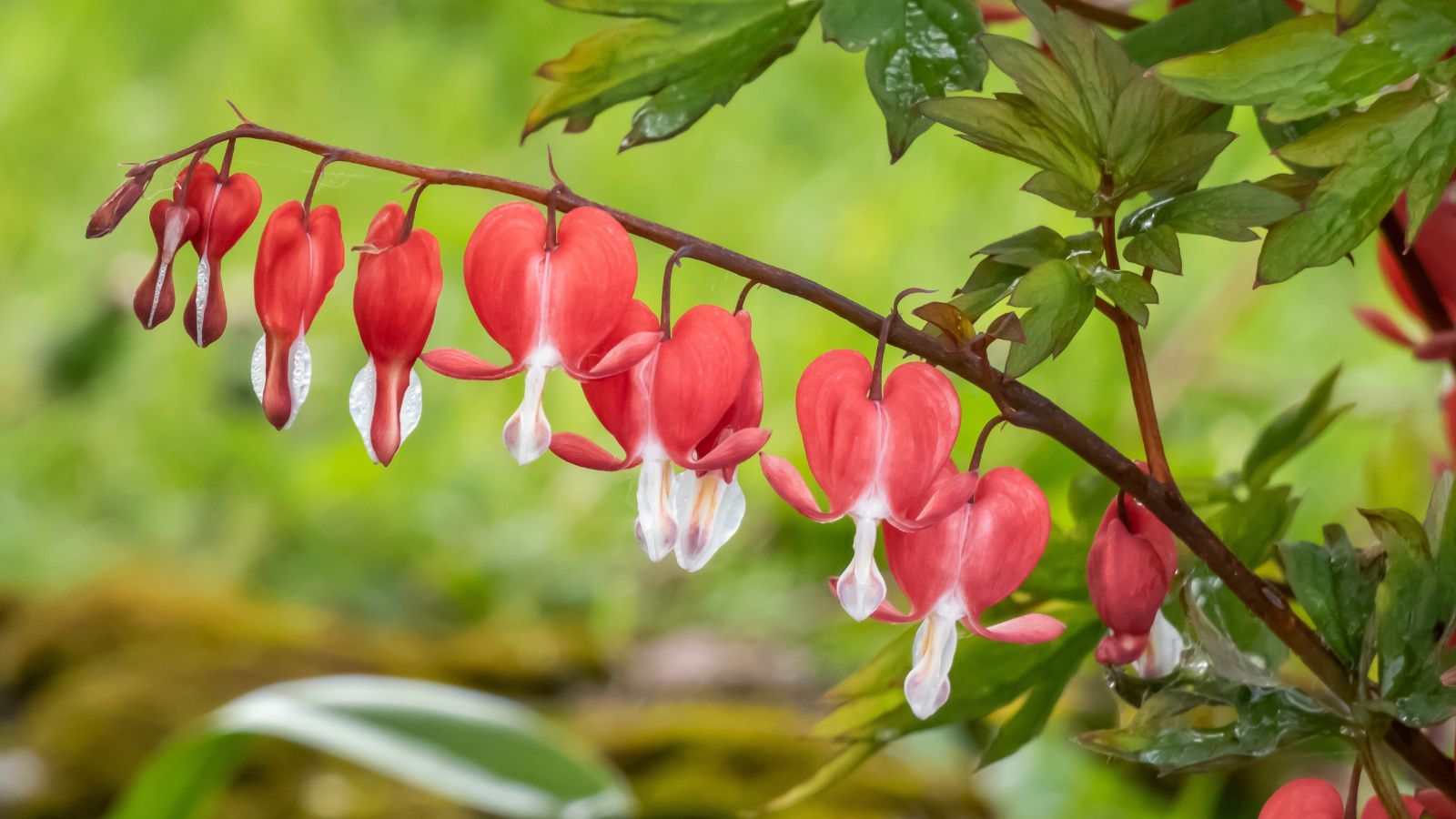
While the name might sound ominous, Bleeding Hearts are actually delightful flowers with their heart-shaped blooms, so they’re bound to add a romantic addition to shady areas in your garden. Usually, they’ll start appearing in early spring, dangling like little jewels from arching stems. Once summer heats up, they may die back, but don’t worry—they’ll return next spring.
Lungwort
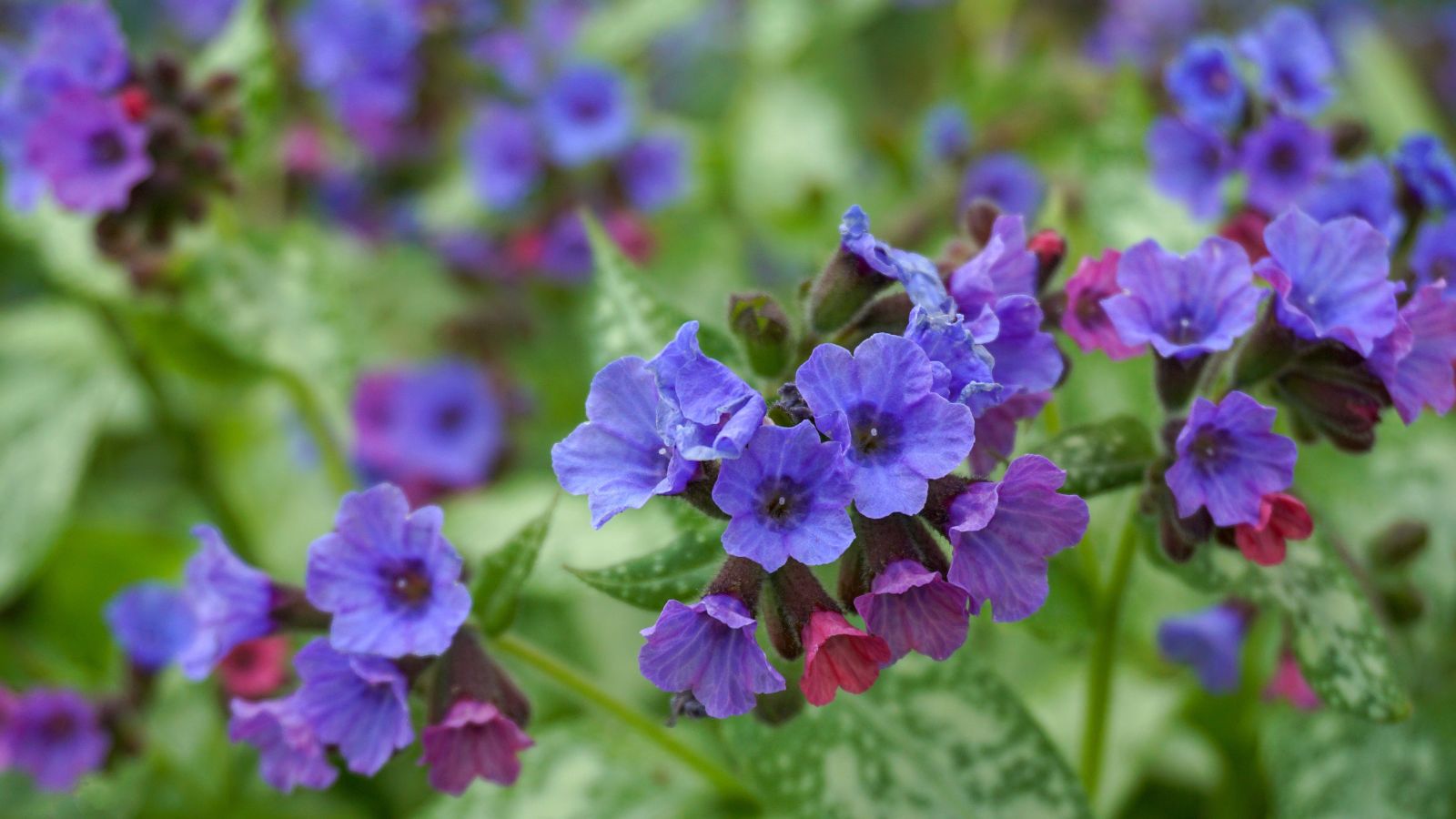
Lungwort’s name might not be the prettiest, but its blooms certainly are. This shade-loving plant produces clusters of small flowers that change color as they age, often starting pink and turning blue or purple. As a result, they’re a seriously dynamic addition to any garden, even adding a decorative white-speckled element when the flowers aren’t in bloom.
Toad Lily
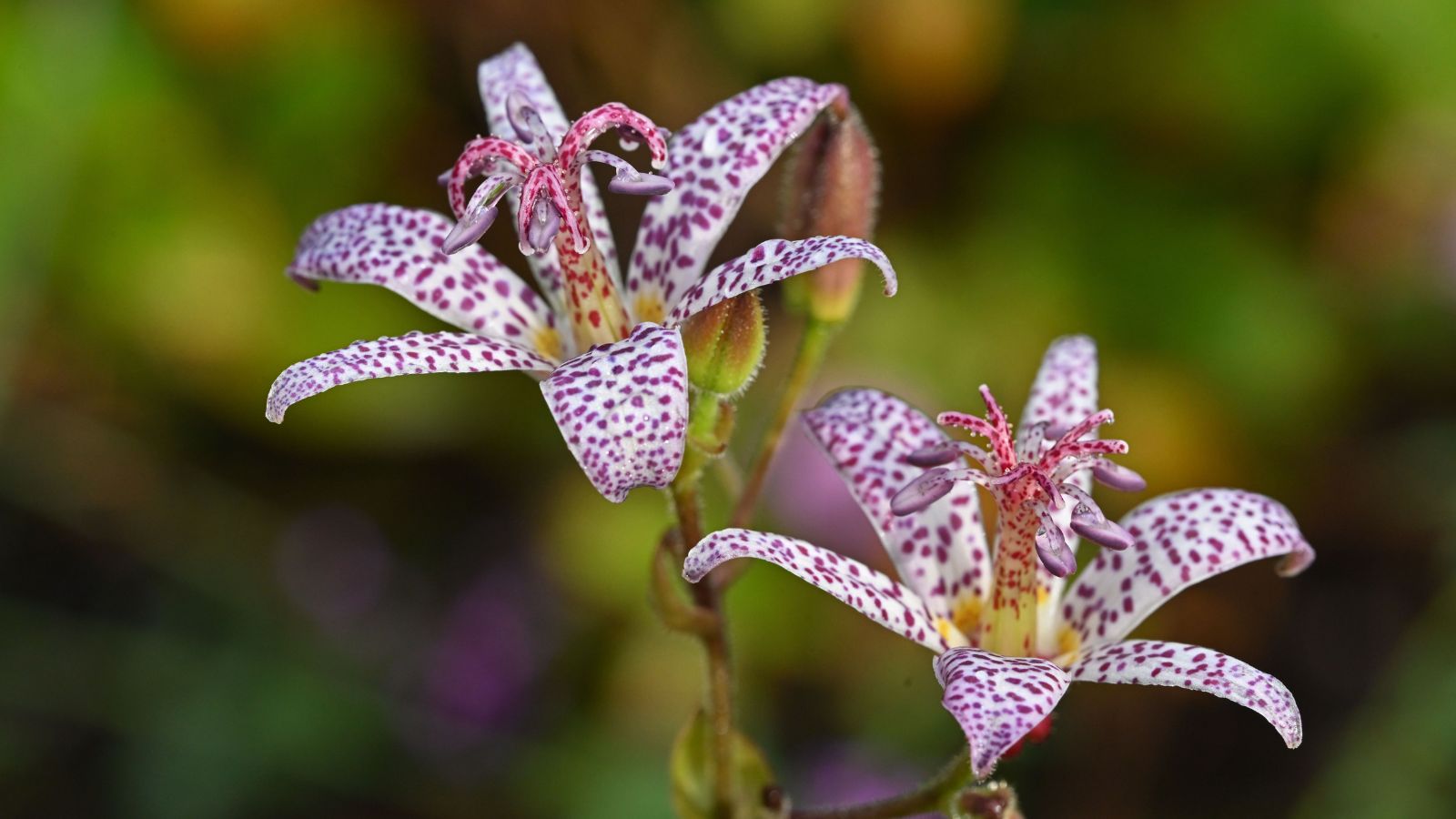
The unique, spotted flowers of Toad Lilies almost look like they belong in a tropical garden, yet amazingly, they’re quite capable of doing well in the shade. Blooming in late summer or early fall, they bring a lot to the garden shortly after your other plants have finished flowering, keeping things interesting. Simply give them moist, well-drained soil and, preferably, some filtered sunlight, and you’ll find them surprisingly low-maintenance little flowers.
Coral Bells
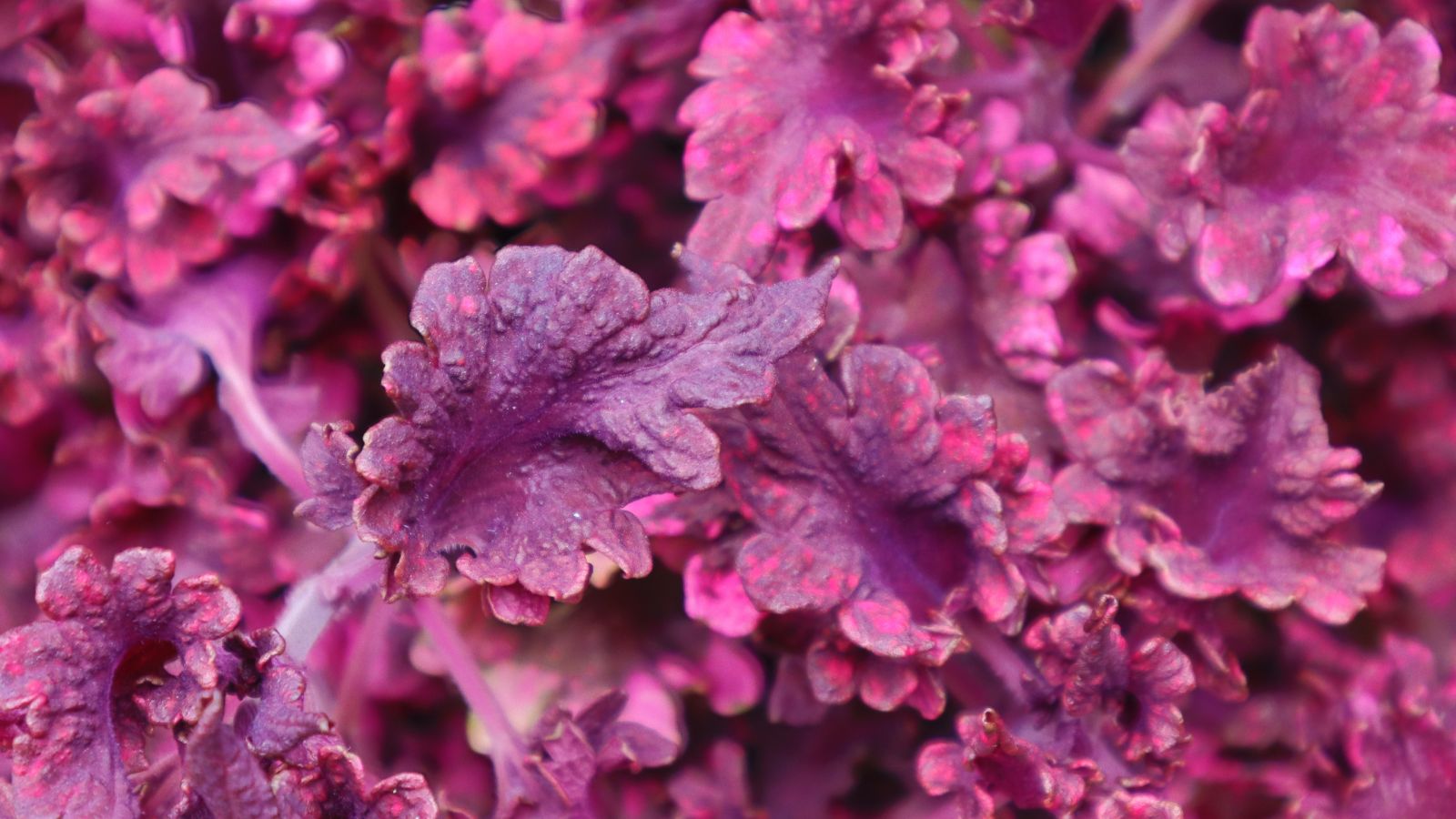
Next on our list is coral bells, flowers that are famous for their striking foliage. However, don’t overlook their bell-shaped flowers, which are just as charming, coming in a range of colors, such as deep purples and vibrant greens. This all depends on the variety, but whichever one you choose, you can be sure that they’ll thrive in both full shade and partial sun.
Columbine
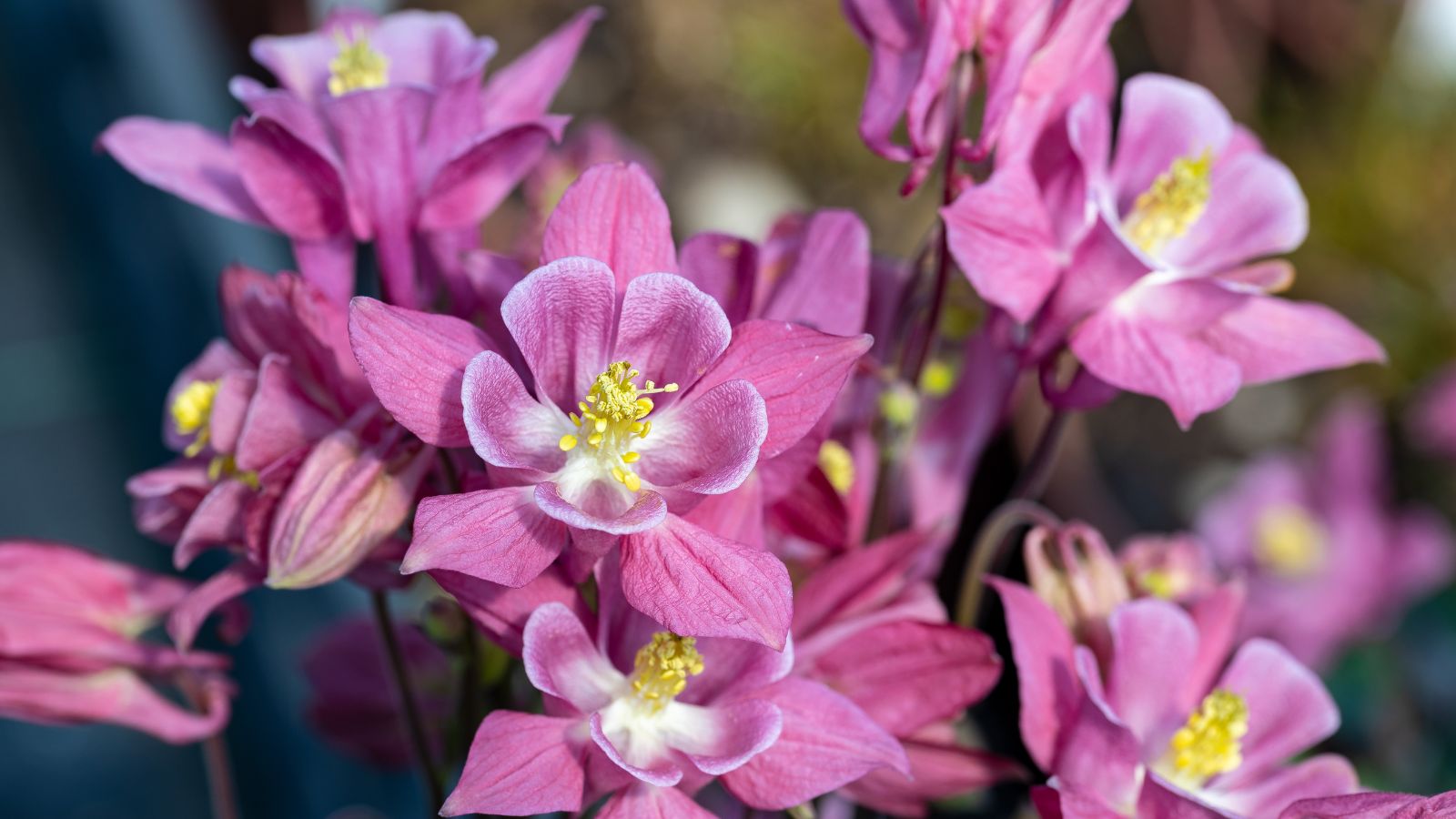
If parts of your garden don’t see too much sunlight, consider making use of these areas by planting Columbines, a delicate, nodding flower that brings a wildflower feel to any garden. You can expect to find blue, pink, and yellow varieties, all of which have spurred petals that give them a unique look. Sure, they’re short-lived perennials, but they self-seed, ensuring a continuous display year after year, and do great in any kind of shade.
Dead Nettle
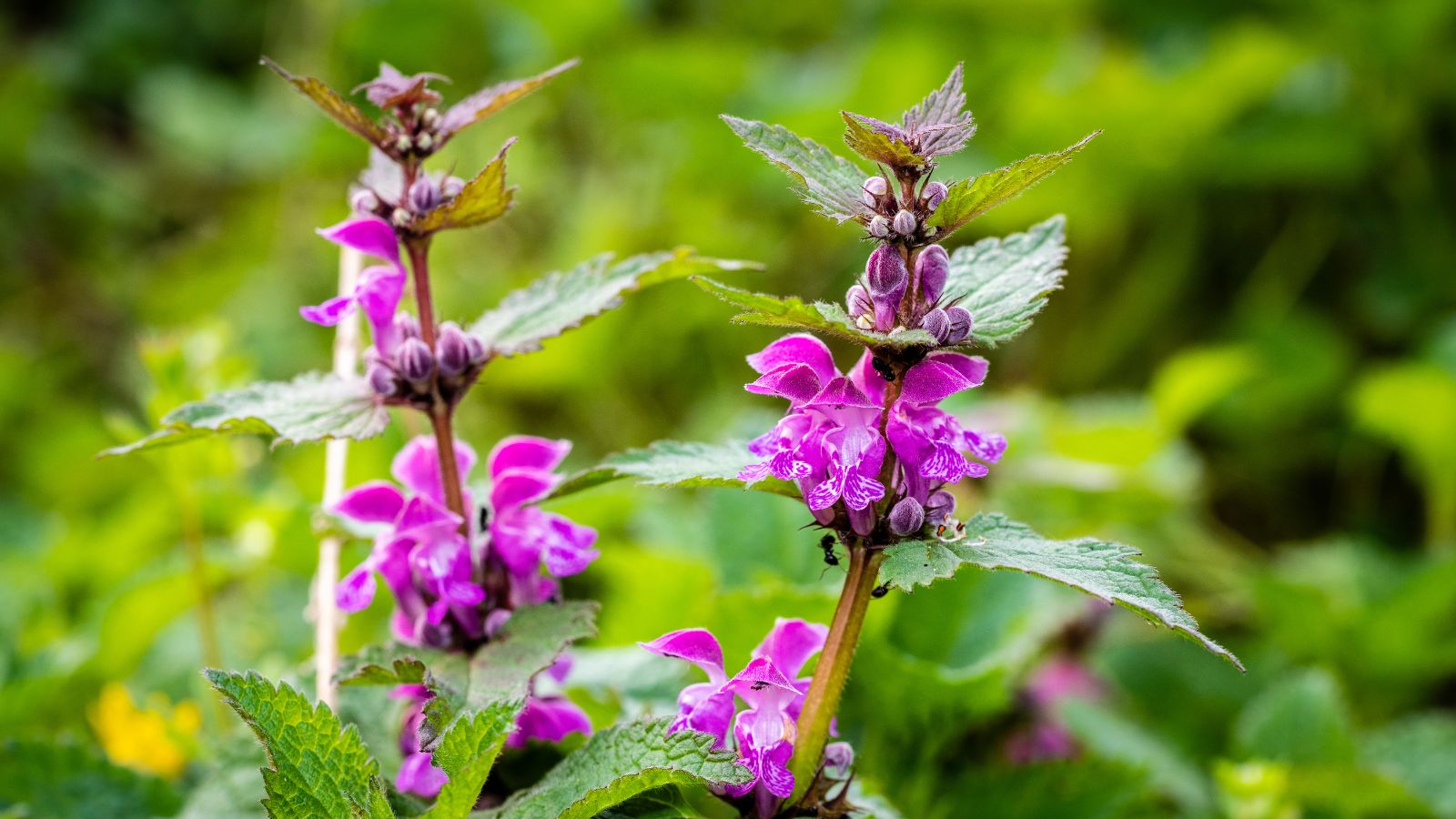
Don’t let the name fool you—dead nettle is far from lifeless. In reality, this groundcover produces small, vibrant flowers that bloom throughout the growing season, with its variegated foliage adding extra interest, such as its silvery leaves that brighten up shady spots. Dead nettle is also especially low-maintenance, making it an ideal choice for those who want a colorful garden without too much effort or sunlight.
Solomon’s Seal
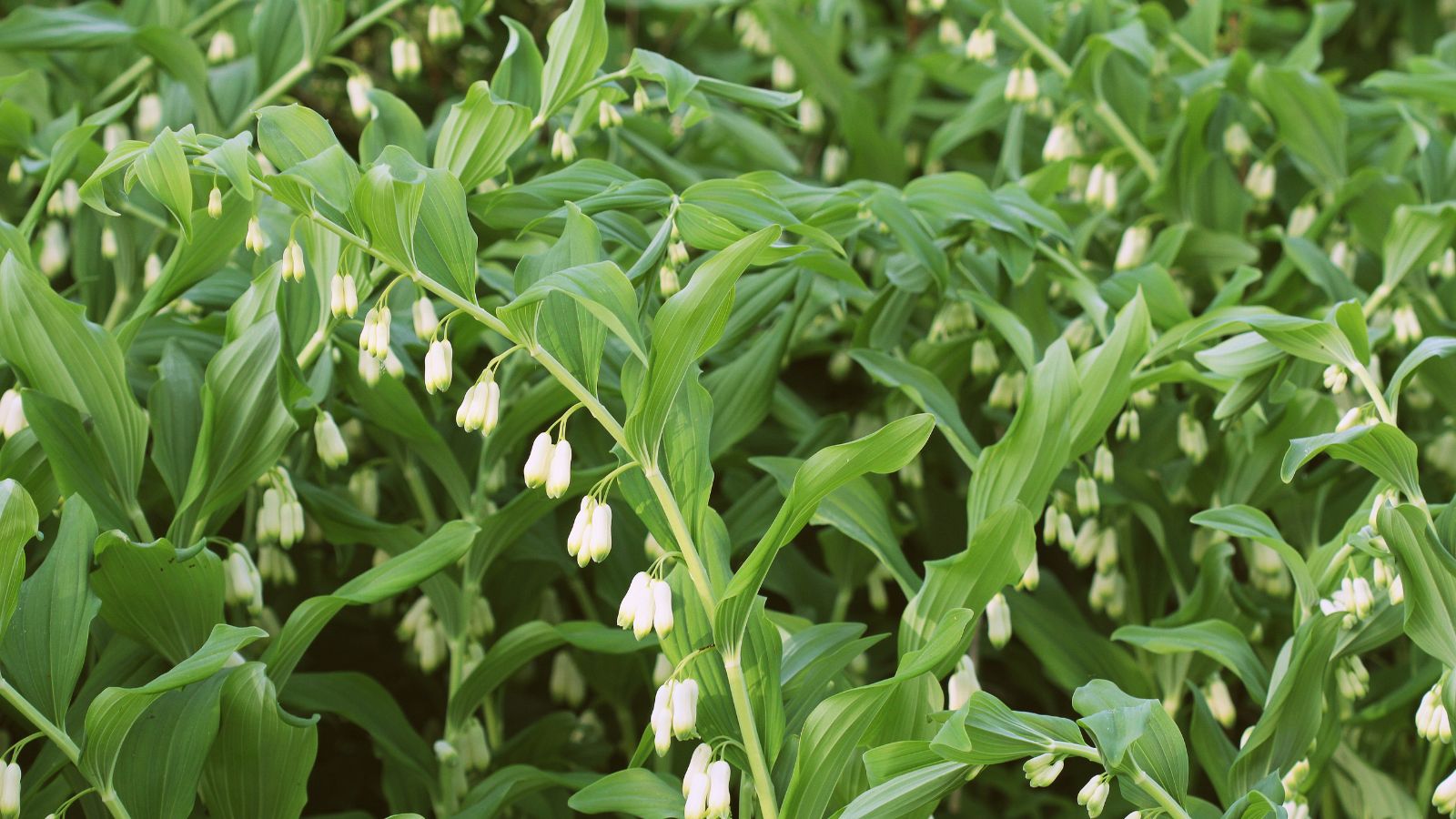
Another flower that will bloom exceptionally well in the shade is Solomon’s seal, which sports arching stems with small, bell-shaped flowers that dangle like tiny ornaments. Yet another perennial, it thrives in deep shade, making it perfect for planting under trees or in woodland gardens. So, stop neglecting that dark spot in your yard, and start injecting some color into it!
Bugleweed
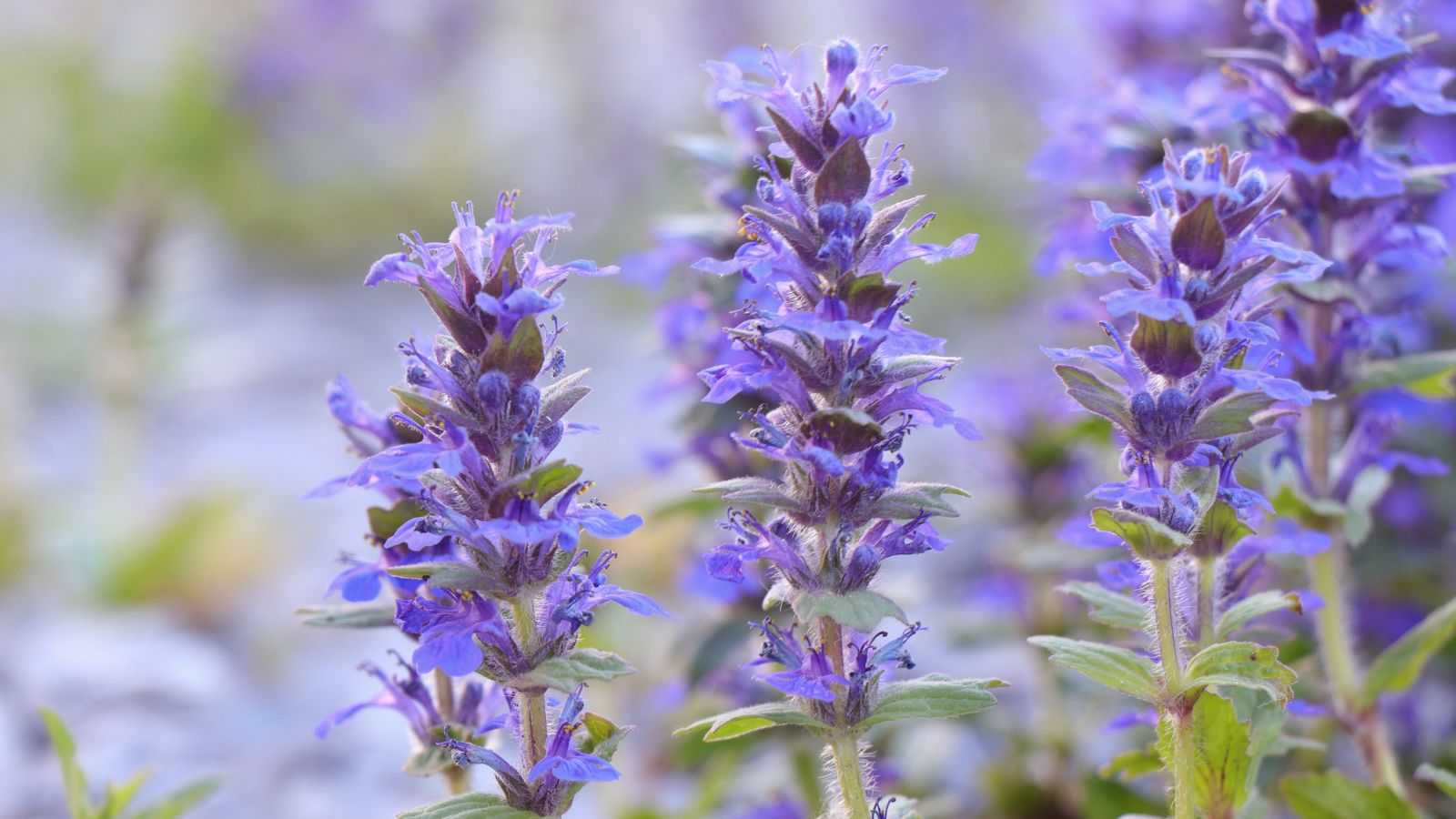
If your yard currently doesn’t feature any Bugleweed, you’ve got to ask yourself why. It’s a hardy ground cover that brings exceptional color and texture when in the shade, so there’s really no excuse not to have them. In the spring, its small spikes of blue or purple flowers appear, while the foliage offers interest year-round. It can also hold an impressive role as an erosion controller, adding yet another reason for you to plant some.
Lady’s Mantle
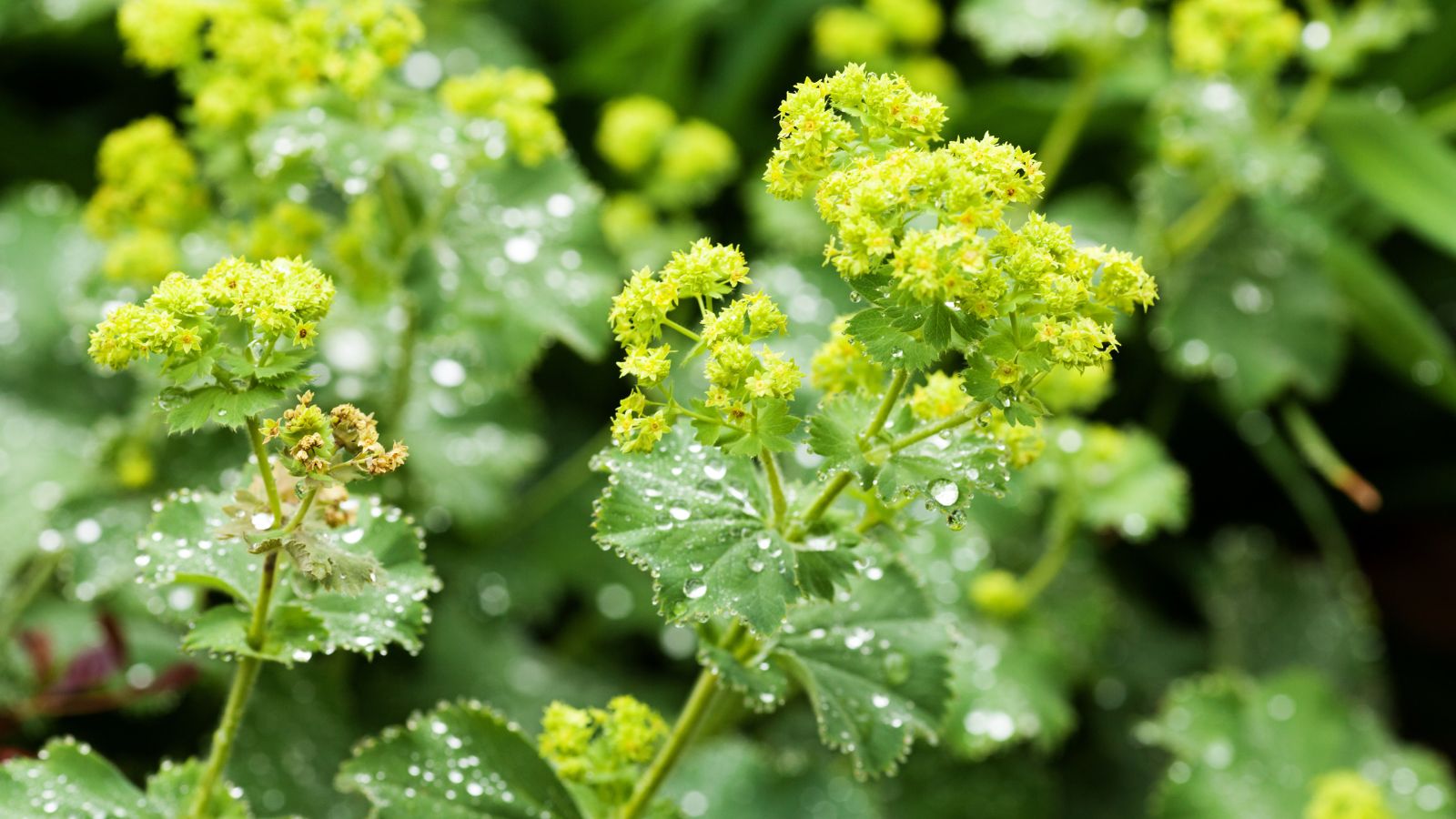
Many gardeners love Lady’s mantle for its soft, scalloped leaves that catch water droplets, creating a sparkling effect after rain. The chartreuse flowers bloom in early summer, adding a pop of color to shady spots. This plant is easy to grow and can handle a variety of soil conditions, making it a low-maintenance choice for gardeners who want something beautiful and resilient.
Goat’s Beard
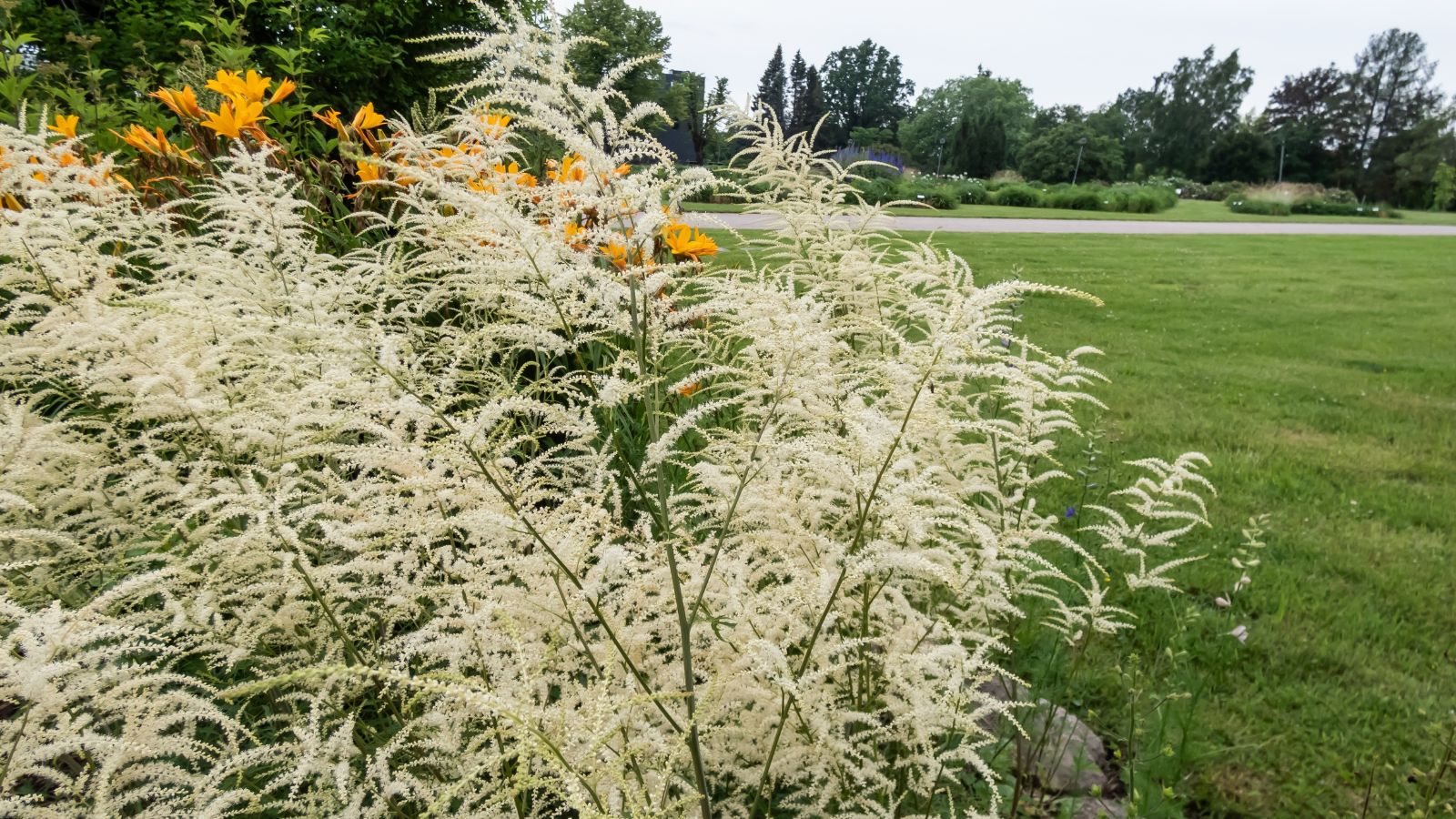
The amusingly named Goat’s beard is a shade-loving perennial, much like many of the flowers on this list. Even in darker areas of your yard, it will produce large, feathery plumes of white or cream-colored flowers, making it a solid alternative to astilbe for those looking for a taller, more dramatic plant. In fact, Goat’s beard can grow up to six feet tall, making it an excellent choice for the back of a border or as a focal point in a shaded area.
Brunnera
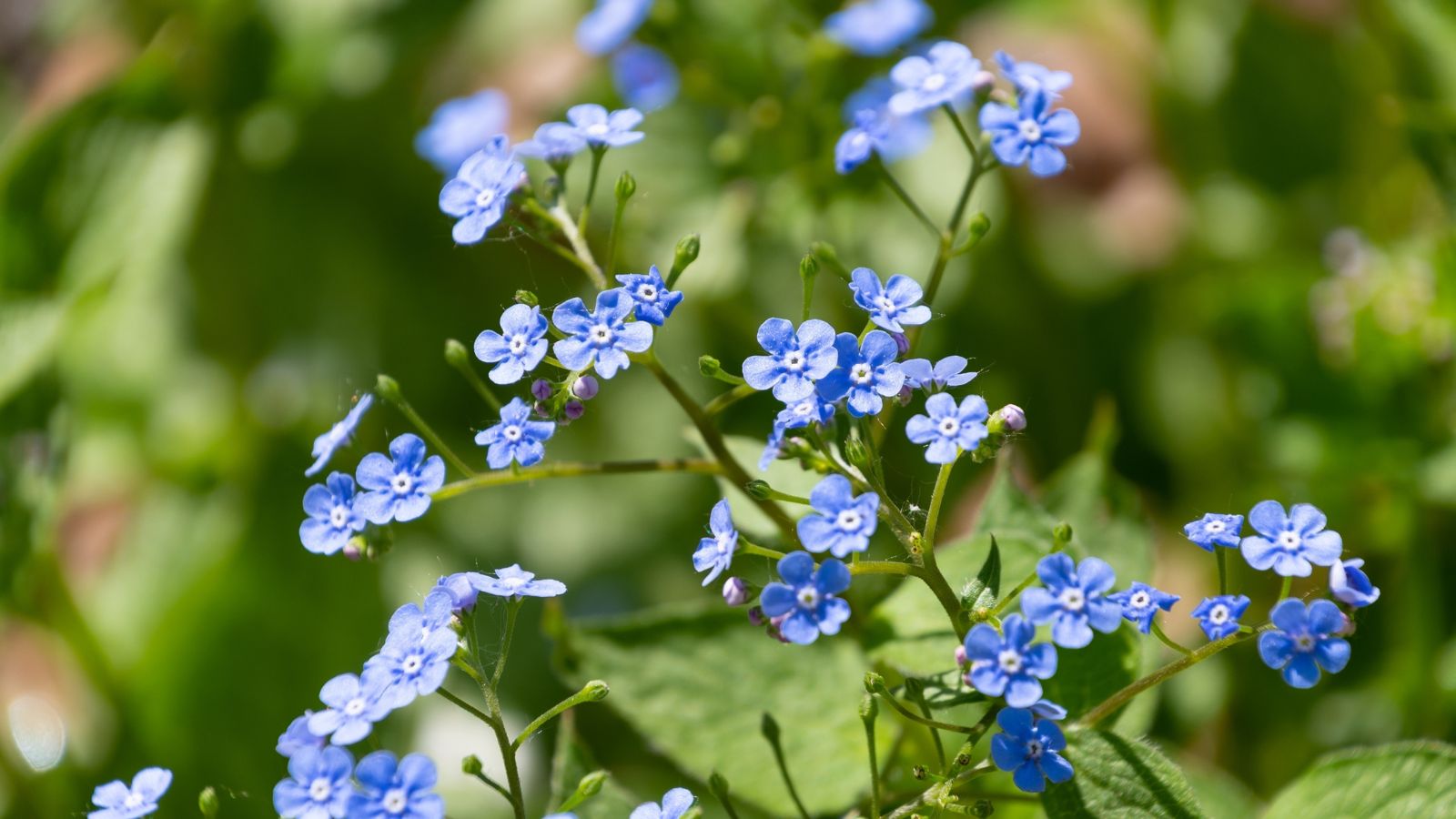
Brunnera’s tiny, sky-blue flowers resemble forget-me-nots, but its heart-shaped leaves are just as attractive. Conveniently, this plant thrives in shaded areas with moist soil, making it perfect for woodland gardens or around ponds. It’s also low-maintenance in its other properties, so there shouldn’t be anything holding you back from introducing its beauty to your yard.
Monkshood
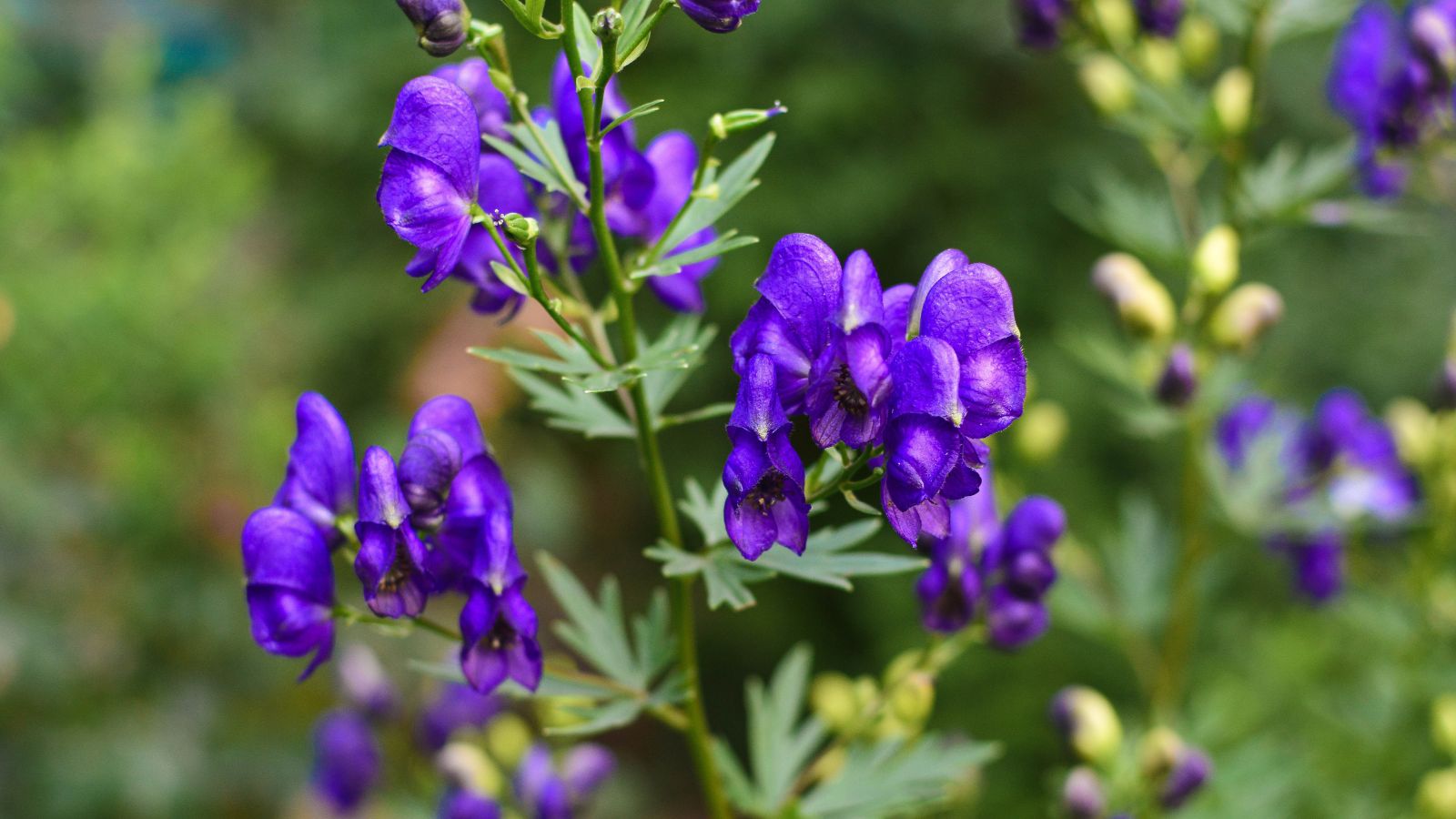
If you haven’t already planted Monkshood in your flower beds, it’s time to change that. You’ll love their tall spikes of deep blue or purple flowers, each of which brings a bold splash of color to shaded areas. This perennial blooms in late summer to fall, making it a great option for extending your garden’s bloom season. Also, it prefers part shade, but it can actually still handle full shade as well. Just be cautious—every part of the plant is toxic if ingested.
Hardy Geranium
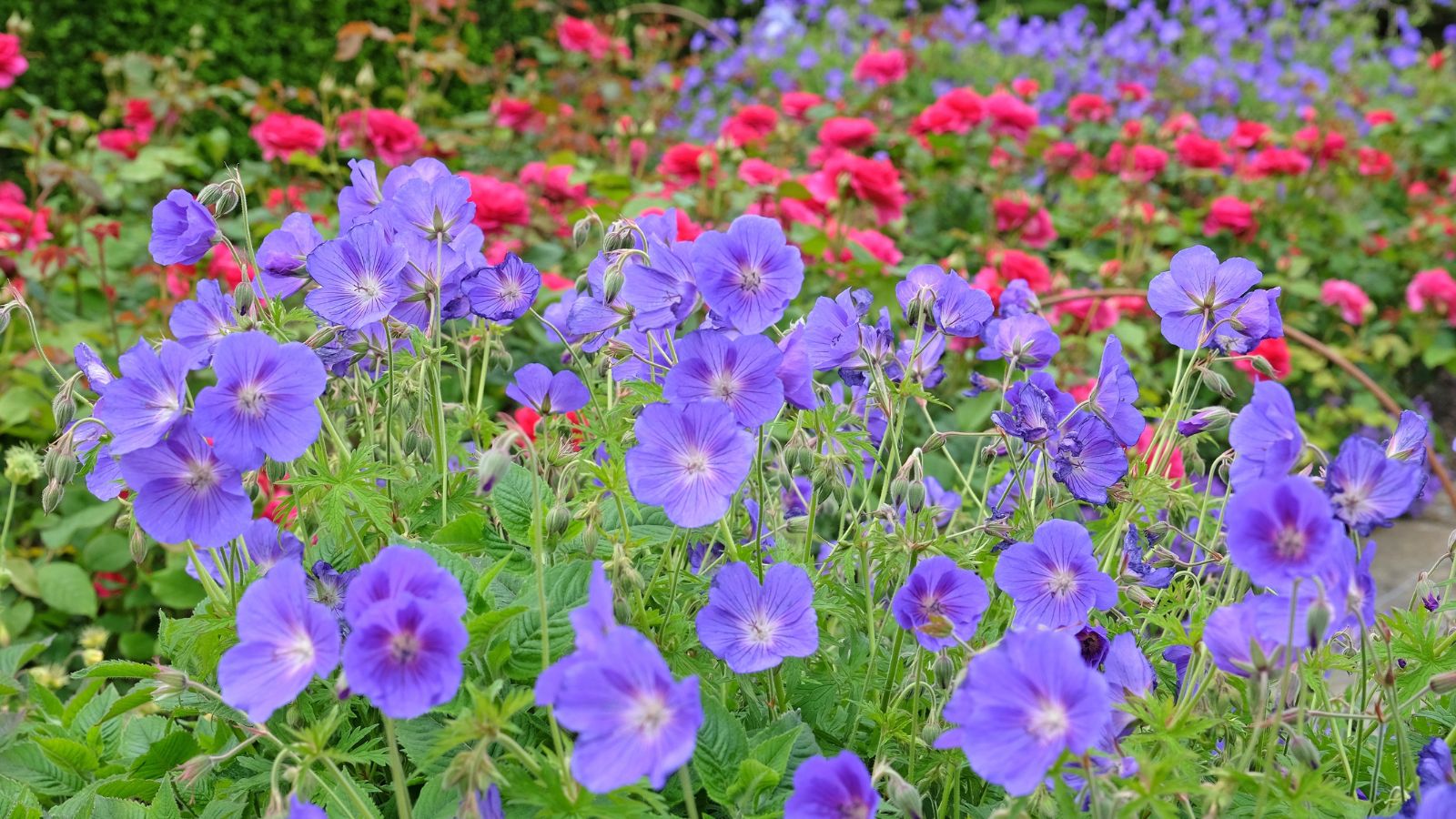
Last but not least is the hardy geraniums, also known as cranesbills. As their longer name suggests, these are versatile and resilient plants that grow excellently in various conditions, including shade and colder weather. Their small, five-petaled flowers bloom from spring through fall, providing long-lasting color, and to make matters even better, they’re super easy to care for and come in a range of colors… what more could you want?
